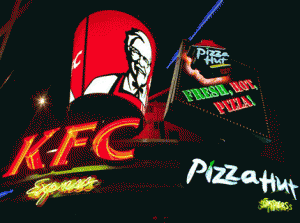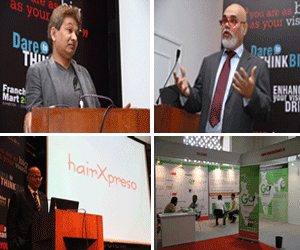Franchise in india growing middle class and young population are fuelling a boom in the fast food industry.
The country’s appetite for burgers and pizzas is continuing to grow. McDonald’s, Pizza Hut, as well as locals chains offering Indian fare are all pushing ahead with ambitious expansion plans for India to capitalise on the market’s vast potential.
“At a time when the economy is experiencing a slowdown and many sectors are struggling to grow, one sector that has bucked the trend and grown rapidly is organised fast food outlets, according to Crisil Research, an Indian research company.
The market is set to double to about 70 billion rupees in the financial year between 2015 to 2016 from 34bn rupees last year, the firm forecasts. It explains that this will largely be driven by new store openings.
A “quantum jump in quick service restaurant spend in urban areas will be propelled by the increase in nuclear families and working women, steady growth in incomes, changing lifestyle and eating patterns and, importantly, greater accessibility of quick service restaurant outlets”, says Prasad Koparkar, a senior director for industry and customised research at Crisil.
Technopak, an Indian consultancy, says that the industry has risen amid “the growing need of the consumer for convenience, increased appetite and craving for international food”.
Hardcastle Restaurants, the company that operates and manages McDonald’s restaurants in south and west India, has an investment plan for the chain of about 5bn rupees for the next three years.
“In India, eating out has evolved from an occasion-driven activity to an occasion in itself today,” says Amit Jatia, the vice chairman for McDonald’s India in the western and southern regions.
Fast food chains have had to adapt to the Indian market to appeal to local tastes and culture. McDonald’s, for example, does not serve beef and pork products in India and developed an eggless mayonnaise specifically for its Indian customers. Items on its menus are specifically designed to cater to the Indian palate such as the McAloo Tikki burger and the McSpicy Chicken burger. Local items on Domino’s Pizza menu include the Peppy Paneer pizza.
McDonald’s has added some 60 restaurants in the past two years and currently has 166 outlets in south and west India.
“We plan to aggressively increase our retail footprint to fortify our presence in the existing market and enter into newer markets and are looking at opening 75 to 100 new restaurants by the financial year 2015,” Mr Jatia says. “Factors propelling this buoyancy include the changing economic and demographic profiles of consumers in India,” he says, explaining that these include the growth of the middle class in India and the country’s young demographic.
“Currently more than 60 per cent of the population is aged less than 30 years,” says Mr Jatia. “They are exposed to international brands and are far more aware of global trends. Considering a large portion of McDonald’s customers are youth, this remains a key growth driver too.”
Yum! Restaurants, which has the Pizza Hut, KFC, and Taco Bell chains, has said that it plans to double its presence in India with plans to have about 1,000 restaurants in the country by 2015.
Domino’s Pizza last month opened its 600th restaurant in India.
“The India operations have emerged as one of our most important markets,” said Steven Pizziol, the Domino’s Pizza vice president for Asia Pacific. “Domino’s India operations are the second-largest single country operations today for Domino’s Pizza global franchise network,outside of the US.”































 +91 9909960054
+91 9909960054
Pingback: Srikant
Pingback: Manshi
Pingback: M.N sharma
Pingback: Mishra